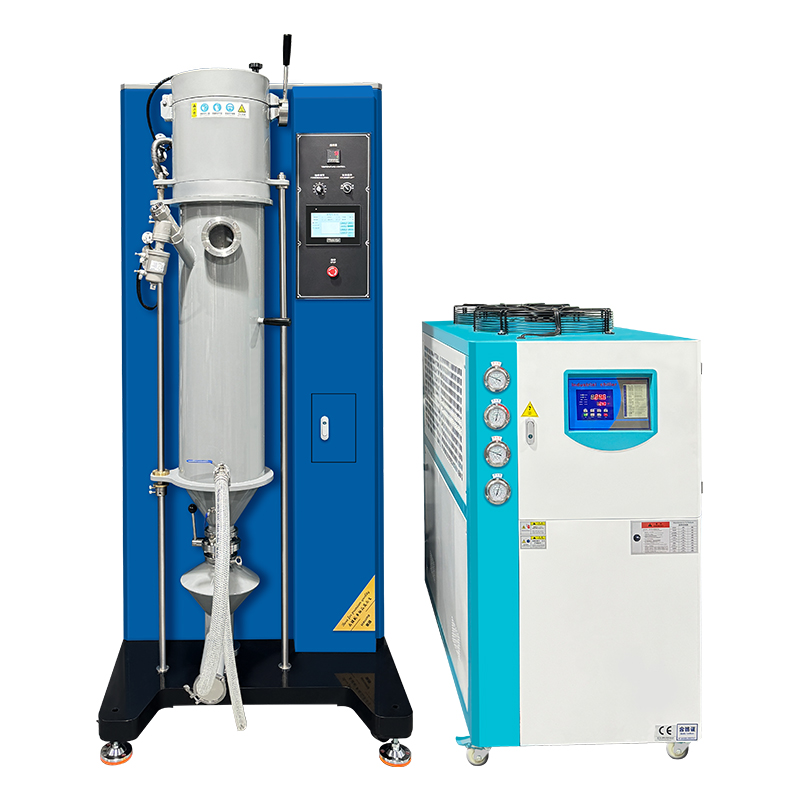Demand for metal powders has surged in recent years, driven by advances in additive manufacturing, aerospace, automotive and various other industries. Metal powders are essential for processes such as 3D printing, sintering and powder metallurgy. One of the most efficient ways to produce these powders is through metal powder atomization, a process that converts molten metal into fine particles. This article explores how metal is turned into powder, focusing on the role of powder atomization equipment in this critical manufacturing process.
Understand metal powder atomization
Metal powder atomization is a process that converts molten metal into fine powder particles. The technology is favored for its ability to produce powders with uniform particle size, shape and distribution, which is critical for a variety of applications. The atomization process can be roughly divided into two main types: gas atomization and water atomization.
Gas atomization
In gas atomization, molten metal is poured through a nozzle and atomized by a high-velocity gas stream, usually nitrogen or argon. Rapid cooling of the molten droplets results in the formation of solid metal particles. This method is particularly effective for producing high-purity powders because the inert gas minimizes oxidation and contamination.
Water atomization
Water atomization, on the other hand, uses high-pressure water jets to break molten metal into droplets. This method is generally more cost-effective and can produce larger quantities of powder. However, it may cause some oxidation, which can affect the performance of the final product. Water atomization is often used to produce iron powder, while gas atomization is preferred for non-ferrous metals and alloys.
Metal powder atomization process
The process of turning metal into powder through atomization involves several key steps:
Melting the Metal: The first step is to melt the metal or alloy in a furnace. This can be done using various methods, including induction melting, arc melting or resistance melting. The choice of melting method depends on the type of metal and the desired properties of the final powder.
Atomization: After the metal is melted, it is transferred to the atomization chamber. In this chamber, the molten metal is subjected to high-pressure gas or water jets, breaking it into tiny droplets. The size of the droplets can be controlled by adjusting the pressure and flow rate of the atomized medium.
Cooling and Solidification: The droplets cool and solidify rapidly as they pass through the spray chamber. The cooling rate is critical as it affects the microstructure and properties of the resulting powder. Faster cooling rates generally produce finer particles and a more uniform microstructure.
Collection and Classification: After solidification, the metal powder is collected and classified according to particle size. This is usually done using screening or air classification techniques. The final product can undergo additional processing, such as grinding or blending, to obtain the desired particle size distribution and properties.
Post-processing: Depending on the application, metal powders may require further processing, such as surface coating or heat treatment, to enhance their properties. This step is critical to ensure that the powder meets the specific requirements of the intended application.
The function of powder atomization device
Powder atomization equipment is a facility specifically designed to carry out the metal powder atomization process efficiently and effectively. These factories are equipped with advanced technology and equipment to ensure high-quality powder production. Here are some key components and features of a powder atomization device:
1. The Furnace
The heart of any powder atomization equipment is the furnace. Designed to handle a variety of metals and alloys, these furnaces provide precise temperature control to ensure optimal melting conditions. Induction furnaces are widely used due to their efficiency and ability to melt a wide range of materials.
2. Atomization System
Atomization systems are critical to producing high-quality metal powders. This includes spray chambers, nozzles, and gas or water delivery systems. The advanced atomization system is designed to optimize droplet size and distribution, ensuring uniform powder properties.
3. Cooling and Collection System
After atomization, cooling and collection systems play a vital role in capturing the solidified powder. These systems typically include cyclones, filters and hoppers to separate the powder from the atomizing media and collect it for further processing.
4. Quality Control and Testing
Quality control is crucial in powder production. Powder atomization plants usually have dedicated laboratories to test the physical and chemical properties of the powders they produce. This includes particle size analysis, morphological assessment and chemical composition analysis to ensure the powder meets industry standards.
5. Automation and Control Systems
Modern powder atomization plants are equipped with advanced automation and control systems that can monitor and regulate the entire production process. This ensures consistency, reduces human error, and increases overall efficiency.
Application of metal powder
Metal powders produced by atomization have a wide range of applications in various industries:
Additive Manufacturing: Metal powders are critical to 3D printing technology, allowing the production of complex geometries and lightweight structures.
Aerospace: High-performance metal powders are used in aerospace components where strength-to-weight ratio and resistance to extreme conditions are critical.
Automotive: Metal powders are used to produce engine components, gears and other critical parts that require high precision and durability.
Medical Devices: Biocompatible metal powders are used to manufacture implants and prosthetics to ensure safety and effectiveness.
Tools and Dies: Metal powders are also used in the production of tools and dies, providing the necessary hardness and wear resistance.
in conclusion
Turning metal into powder via atomization is a complex process that plays a vital role in modern manufacturing. Powder atomization plants are at the forefront of this technology, providing the necessary infrastructure and expertise to produce high-quality metal powders for a variety of applications. As industry continues to evolve and demand more advanced materials, the importance of metal powder atomization will only grow, paving the way for innovation in manufacturing and materials science. Whether it’s aerospace, automotive or additive manufacturing, the future of metal powders is bright, driven by the capabilities of powder atomization plants.
Post time: Nov-12-2024












